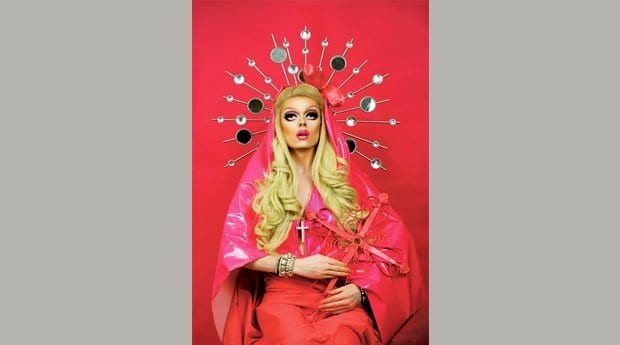
Envy (Sapphire Tithi-Reign) Credit: Devon Poole

Gluttony (Donnarama) Credit: Devon Poole
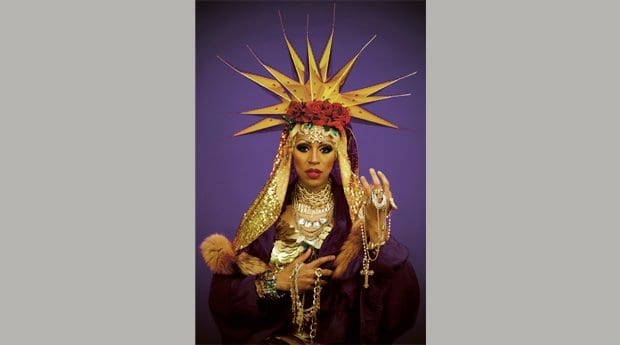
Greed (Tynomi Banks) Credit: Devon Poole
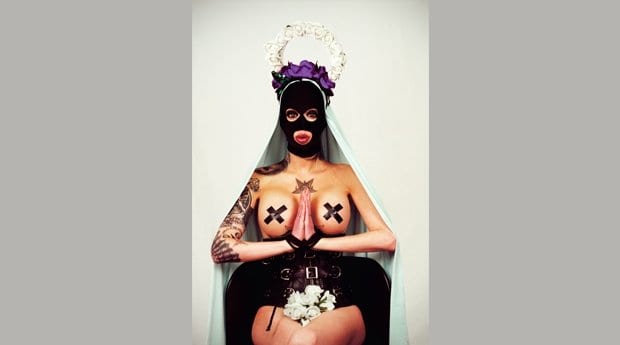
Lust (Lexi Sanfino) Credit: Devon Poole
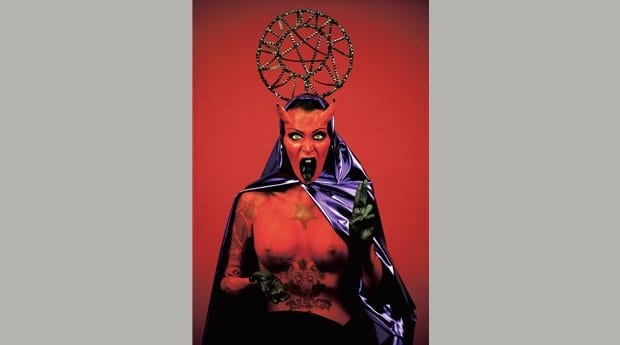
Pride (Lexi Sanfino) Credit: Devon Poole

Sloth (Allysin Chaynes) Credit: Devon Poole
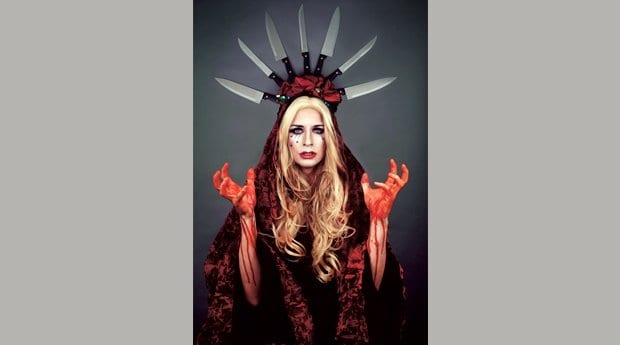
Wrath (Fabulous Russella) Credit: Devon Poole
For Devon Poole, the art of drag is a religious experience.
In his new photo series, the sinfully sacrilicious Seven Deadly Marys, he shot some of the city’s most notorious drag and trans performers all dolled up à la Mother of God. As well as embodying the Virgin Mary, each subject also represents one of the seven deadly sins, meaning we get Lexi Sanfino as a BDSM-flavoured Our Lady of Lust, Donnarama as a McDonald’s-themed Our Lady of Gluttony (yes, she is crying ketchup), and Tynomi Banks as a blinged-out Our Lady of Greed. The images are strikingly campy, deliciously wicked and surprisingly pretty.
Is Poole a lapsed Catholic striking back against the famously homophobic institution by queering some of its most sacred iconography? Surprisingly, no. “I do not have a religious background,” he admits. “I was raised by a single mother who is a painter and a sculptor, so I was introduced to art at a very early age.”
And the inspiration for shooting his blasphemous beauties? Appropriately enough, it came to him in a vision. “The first image that popped into my mind was a Ronald McDonald Virgin Mary. I thought it would be a challenge to try to reimagine a religious icon in my dramatic aesthetic. And through researching the subject, I read that Mary was born and lived free of sin. I thought it would be a great contradiction having her represent each sin.”
As an artist, Poole has been experimenting with drag, both in his photography and personally, since day one. “As a child, I was always dressing up in my mother’s clothes,” he says. “I even dressed up as Wonder Woman for Halloween when I was four. I have dabbled in drag for years and have known people in the community for just as long.”
Those connections certainly paid off when Poole was tasked with finding models for the series, especially when it came to casting his longtime collaborator Donnarama as Gluttony herself. “I love working with her!” he says. “We are both fearless and want to push boundaries and make art outside of the box.”
Before her current stint as one Holy Mother, Donnarama has appeared in Poole’s work as everything from Frida Kahlo to Lady Gaga to Optimus Prime. “Anything experimental in terms of costume and makeup and I’m in,” Donnarama says, though she admits it was hard keeping a straight face with a mouth stuffed with french fries. “I like the idea of toying with the concept of spiritual fulfilment through over-indulgence, hoarding from fast-food chains and department stores. It’s magical and miserable at the same time. Also, I like the name Mary: a common term for addressing a queen and also the mother of Jesus. They have finally met in chaotic irony, amen!”
While Donnarama was the only model he knew personally before the series, being a member of the drag community allowed Poole to connect easily with other queens he knew by reputation. “Everyone was really excited to be part of the work,” he says, “and I couldn’t have done it without them.”
Although Poole approached each image with a specific idea in mind, each picture strongly bears the influence and personality of its model. “Each really fills out the role with their own character and personal dynamic,” Donnarama agrees. “They illuminate the concept with their own distinct personality and style. It’s both an exaggeration of character and role play; there’s a lot to take in and observe … basically, everything a drag queen has to offer times 10.”
Thanks largely to the success of RuPaul’s Drag Race, drag culture is having a bit of a moment. Lingo like “throwing shade” and “serving fish” has been creeping into the common parlance, and you don’t have to have a Paris Is Burning DVD to get in on the kiki anymore. In fact, Poole’s photo series, with its glossy, polished aesthetic and tongue-in-cheek sensibility, could almost be an especially outré Drag Race challenge.
“I definitely think RuPaul’s Drag Race has brought drag culture to a broader audience, especially to younger LGBTQ teens,” Poole says. “I would have loved a TV show like it when I was younger. But I wouldn’t go so far as to say drag has gone mainstream. I think there’s a large part of the population that still doesn’t know much about or understand the art, so along with fans of drag, I’d like to reach those people with my work, too, and open people’s eyes to a new way of seeing the world around them.”
And on the off chance Logo caught wind of his work and asked him to design his own challenge for the latest batch of competing queens? “I think a photo shoot where the queens recreate childhood photos of themselves, but in drag, could be a lot of fun,” Poole says. It’s a disarmingly sweet concept for a competition that’s often preoccupied with drama and bitchy one-liners. “It would be a great way to get to know the contestants and shed some light on what their childhoods were like. For most LGBTQ kids, it’s not easy growing up feeling different.”
While he may have just completed work on what many would consider the mother of all drag-related photo series, Poole isn’t planning to untuck just yet. “For my next series, I will be doing something more erotic that plays around with masculinity and femininity. Not to give too much away, but it will be very Tom of Finland meets glamazon supermodel: very genderbending and sexy.”
Part of Poole’s goal is to respond to men who told him that the idea of him in drag was a sexual turnoff. “I always want to push the envelope and make people question the work, and themselves.”
To check out more of Poole’s work or to buy prints from the Seven Deadly Marys series, visit him online at devonpoole.com.

 Why you can trust Xtra
Why you can trust Xtra


